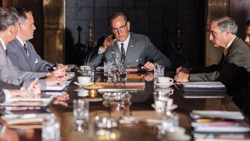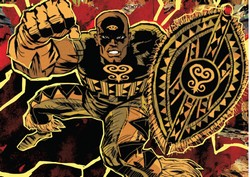It’s Nov. 22, 1963 and President John F. Kennedy has arrived in town. There’s an exciting buzz around Dallas, Texas for the President’s arrival because he embodies everything about America: hope, energy, excitement, and strength.
For the President’s arrival, a grand parade is scheduled where Texans will have the once in a lifetime opportunity to greet Kennedy as he rides along the streets of Dallas. The weather is perfect too.
There’s not a single cloud in the sky, great for letting the hood down and taking in that Texas sun. At around 12:30 PM, you are one of the many visitors waiting for a glimpse of the President as he breezes by Dealey Plaza.
Once the President finally reaches the Plaza, you see him in all his glory, waving to raucous crowd. Then suddenly, shots are fired and the President has fallen over in the backseat of the vehicle.
The First Lady is hysterical as blood covers her hands. The motorcade speeds out of sight and there is confusion in the crowd. Later that day, President Kennedy is announced dead and there is a new man in charge: Lyndon Johnson.
Despite the pressure of filling in Kennedy’s shoes, President Johnson passed important pieces of legislation, such as the Civil Rights Act of 1964, Medicare, Medicaid, and the Wilderness Protection Act.
 However, Johnson was a paradoxical figure because of how we handled the Vietnam War. With these events considered, director Rob Reiner has the opportunity to put a spin on Johnson’s widely familiar achievements and failures.
However, Johnson was a paradoxical figure because of how we handled the Vietnam War. With these events considered, director Rob Reiner has the opportunity to put a spin on Johnson’s widely familiar achievements and failures.
Unfortunately, Reiner misfires by glossing over these crucial moments and does not give any additional insight to what we may already know.
The biopic gives us about as much information as President Johnson’s Wikipedia page, if not less.
It maneuvers through Johnson’s failed presidential campaign, promotion to the Vice Presidency and his rise to the presidency. Along the way, Johnson battles with Georgian Senator Richard Russell and the Kennedys over the increasing issue of civil rights.
If one managed to stay awake during their American history class in junior year of high school, they might pass out during this film because of the regurgitated story.
Although there are a handful of scenes where Johnson discusses civil rights, it does not delve deep enough into how the Civil Rights Act of 1964 was passed.
During Johnson’s time as the Vice President, Senator Russell talks of how fervently he was against equal rights. Once Johnson becomes the President, Russell vows to fight this bill with every fiber of his being.
This sets up an interesting premise, where we can finally gain insight as to how Johnson battled with Russell and southern democrats over civil rights.
However, it falls short by skipping the strenuous process and instead cuts to title cards generalizing Johnson’s legacy.
The buildup towards an insightful story falls completely flat on its face by giving little to no details as to how Johnson governed.
While Reiner tells the basic story of Johnson, he fails to capture the period of the 1960s. It is difficult not to associate this era with activism sweeping across the country.
Occasionally there are news bulletins about how tensions are rising among protesters, like a brief mentioning of the Greensboro sit-ins, but these events hardly come to light, nor or mentioned by Johnson or other characters. Even Martin Luther King Jr.’s name is surprisingly mentioned only once or twice. Sure, the outfits and cars have a 1960s feel, but Reiner fails to capture the political tensions rising throughout the country.
It is puzzling how with so much information, Reiner fails to focus on one part of Johnson’s term and shed light on how it affected the President, country, and generations to follow. For example, director Jay Roach’s All the Way focuses on President Johnson’s first year in office and the difficulties he faced to pass the Civil Rights Act of 1964.
All the Way goes into depth with Johnson’s battle against Senator Russell, working with Martin Luther King Jr., and personal conflicts expressed through moments with his wife. Meanwhile, LBJ gives the bare-bones story of how Johnson became president, with little additional information we are unfamiliar with.
The biopic is conventional and cliche in its storytelling, which is unfortunate for such a complex presidency.
The saving grace of LBJ is the incredible performance by Woody Harrelson as President Johnson. Earlier this year, Harrelson channeled his inner Colonel Walter E. Kurtz (Marlon Brando’s character from Apocalypse Now) and gave a chilling performance as the brutal Colonel in War for the Planet of the Apes.
Harrelson’s great acting continues in LBJ, as he brings the no-nonsense leader to life. Johnson’s ego can fill an entire room as he orders his staff around from tasks like getting his tailor on the phone, or grills Robert Kennedy on his role as the Vice President.
However, Johnson was also a needy person who wanted to be liked by everyone. Johnson expresses how hard he tries to get along with politicians from both sides of the aisle in late night conversations with his wife, played by Jennifer Jason Leigh.
The President’s moments of self-reflection show how he cared not only for his legacy, but the direction of the country. Additionally, it is remarkable how Woody Harrelson looks exactly like President Johnson.
From his towering stature to the large ears, Harrelson transforms to give one of the best performances of the year.
Despite the great amount of talent behind the camera with director Rob Reiner and the impressive cast led by Woody Harrelson, LBJ completely misses the mark because its lack of depth in storytelling.
A majority of the information presented is something most audiences may know of already.
It fails to add anything new to Johnson’s legacy and strangely does not see the President as a complex figure through policy decisions. If someone is interested in Johnson’s story, just spend five minutes on his Wikipedia page.
They will learn a lot more, while saving the price of admission.
IMAGE TAKEN from TheHollywoodReporter
IMAGE TAKEN from Coolider.com




